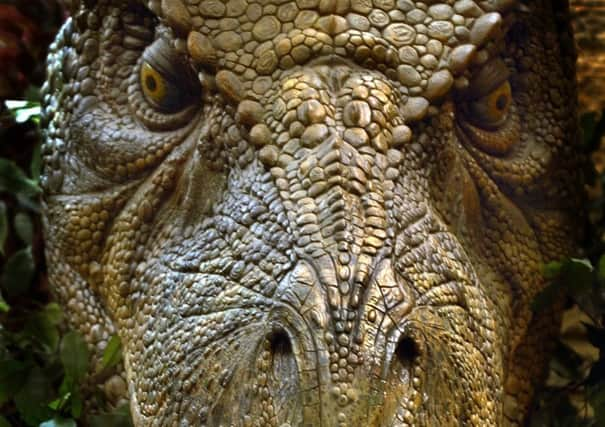How our festive dinner centrepiece is a distant relation to dinosaurs


There was a time when scientists thought that dinosaurs had died out around 60 million years ago and only fossils of them remained. They now know that pronouncements of their disappearance were a touch premature. Most of us will have one of them sitting on our dining room table on Christmas Day.
The birds that we like so much to eat are, according to US researchers, closely related descendents of the Jurassic Park monsters that will be almost certainly on our screens at some stage during the Christmas season. In the films the computer generated tyrannosaurus rexes don’t look much like birds for two simple reasons. One is that when they made the first film, scientists were still not absolutely sure that the fossil record proved that birds were dinosaurs. The other is that if they’d made the monsters look like a scaled up version of your Sunday lunch then it is most unlikely that we’d all have been very scared.
Advertisement
Hide AdAdvertisement
Hide AdIn the wild almost all the birds we like to eat are magnificent creatures that give every impression of being very well equipped to look after themselves. Many years ago I was fortunate enough to travel to Sri Lanka. Walking through one of the steamier and more remote jungle districts I caught a glimpse of a gorgeous exotic bird flitting through the trees. It was a riot of fantastic colours having touches of red and gold and brown feathers and it was an impressive size.
I tried to look very carefully at its plumage and to remember the details in the hope that when I got back to the hotel I could find a description of this beauty in the book on the birds of Ceylon that I had left in my room. It didn’t take me long to track down the obscure and strange creature I’d seen flying through the forest. It was pretty clearly a junglefowl, which just happens to be a close relation of the domestic chicken that is available in your local supermarket.
Human beings have been rearing chickens domestically for at least 6,000 years and once tamed a little and reared in captivity they proved such a popular source of food that the farming of them spread very rapidly from South East Asia across almost all of the world. Anyone who looks after a few chickens will tell you that they are clever things with personalities all of their own.
For most of human existence chickens were treated accordingly. They were something very precious that required a lot of effort and resources to rear. You didn’t eat your egg layer unless times were very hard or the occasion was special. Hence the association with the major feast of the year during the winter solstice celebrations. Hence also the later association with eating a bird at Christmas.
Advertisement
Hide AdAdvertisement
Hide AdThe idea of eating a turkey is a much more recent introduction since Europeans first came across them in America. I’d like to be able to say I’d seen them living in the wilds of the Appalachian Mountains and had learned of their complex lifestyles and high degrees of intelligence from a detailed study in their natural environment. In reality the only time I’ve met one up close was in my village in Yorkshire.
A couple of years back one of our Cononley locals liked to keep quite a wide variety of free range birds. So free range that most of them wondered off around the village.
Two turkeys were included in the collection. One of them liked people and was very curious. If you saw it then it would quickly come over to investigate what you were doing and loved having its feathers stroked. They were surprisingly smooth and silky and not at all harsh to the touch.
I got to know it quite well and it was always fun to watch the reaction of little children as it came up to them hoping to be stroked and they backed off nervously reacting like they really were dealing with a killer dinosaur. Then the bird disappeared suddenly and I never saw it again. Curiously at around this time of year.